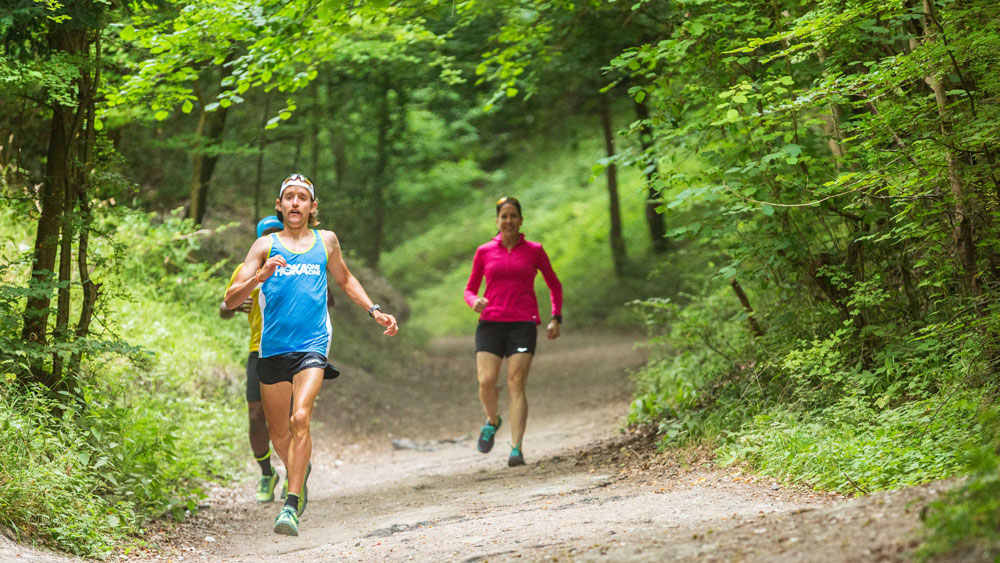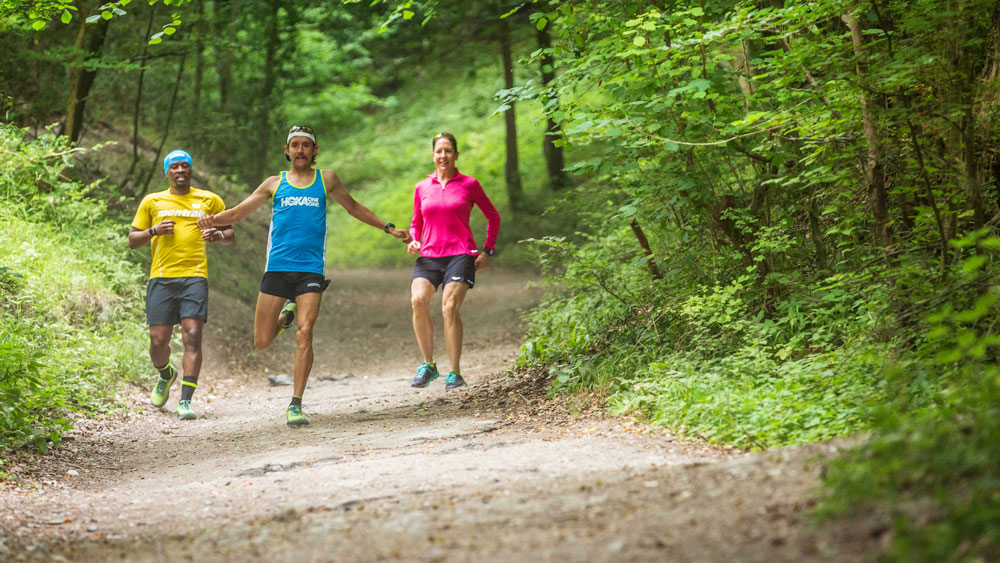Three Simple Ways To Get Better At Running Downhill
Use this expert advice from pro trail runners to fly downhill faster (and safely)

There are two expected rewards for slogging your way up a mighty climb. The first is a cracking view and the second is the trip back down. But unlike cyclists, who get to coast down, runners soon find that descending poses the body a whole new set of challenges.
While it might not be as aerobically testing as climbing, your muscles will take a pounding as you hammer down a trail or road, with your legs bearing the brunt of the impact and your core constantly engaged to try and help keep you stable. The technical difficulty of descending at speed shouldn’t be underestimated either – it’s a skill to be practised just like any other part of running, and that practice will increase your confidence, which is crucial to successful downhill running.
For advice on getting better at downhill running we spoke to professional ultramarathon runners and Hoka One One athletes Tom Evans and Hayden Hawks, who have both spent countless hours flying down descents on all kinds of terrain.
Don’t Land On Your Heels
“When people twist ankles going downhill it’s because they’re landing on their heels,” says Evans. “And the reason for putting your heels down first is because you’re braking. You want to slow down.
“If you put your heel on the ground and move your ankle around, you’ll see there’s quite a lot of movement. If you do the same with your toes and keep them firmly planted, you will see how little movement there is in the ankle. So if you’re going downhill and you’re landing on your heel, all that movement is dangerous.
“You have to have a little bit of extra confidence to lean slightly forwards and land on your toes. It might feel as if you’re going to fall but I promise your legs are going to catch you and you’re not going to twist your ankles.”
Keep Your Eyes Up
“Always be looking forwards and thinking of your next two or three steps,” says Hawks. "Don’t look straight at the ground. A lot of people do that and then a branch comes up two or three steps ahead and they hit that branch and fall. You need to be looking forwards five or 10 metres ahead of you and planning what you’re going to do.”
Get the Coach Newsletter
Sign up for workout ideas, training advice, reviews of the latest gear and more.
Use Your Arms

“When we’re running [on trails] we’ve only ever got one foot on the ground, unless something’s going seriously wrong,” says Evans. “So you haven’t got to have a perfect arm shape going forwards and backwards with a massive elbow bend like Mo Farah – use your arms to balance instead.
“Look at other animals in the wild, like monkeys. When they’re running on branches they’ve got their tail sticking out to help them balance. We haven’t got that luxury, so use what you have got – your arms. Don’t worry about looking a bit stupid – you’ll have more balance and you’ll feel more confident so you’ll be on your toes, which will then give you more stability on the trails.”

Nick Harris-Fry is a journalist who has been covering health and fitness since 2015. Nick is an avid runner, covering 70-110km a week, which gives him ample opportunity to test a wide range of running shoes and running gear. He is also the chief tester for fitness trackers and running watches, treadmills and exercise bikes, and workout headphones.
